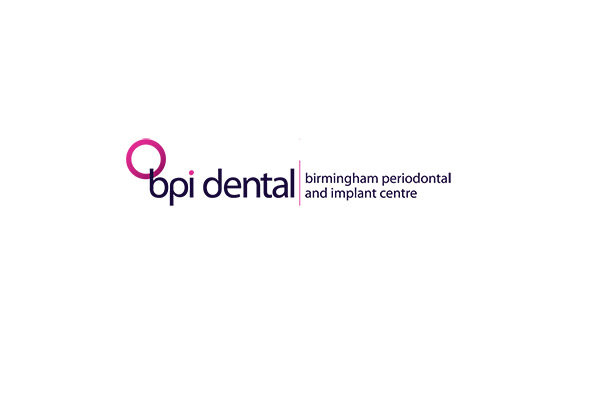Common complications of prosthodontics – Dr Boota Uhbi
Featured Products Promotional FeaturesPosted by: Dental Design 18th April 2019

 There are numerous different types of dental prosthesis currently in use, both fixed and removable, with a variety of material composition and mechanical stress characteristics. There is also, of course, a great deal of variability in each patient’s oral condition and biological particulars, including the presence of parafunctional behaviour (such as bruxism), systemic diseases and so forth. All these factors can give rise to various complications. The following are some of the more commonly observed complications you might encounter.
There are numerous different types of dental prosthesis currently in use, both fixed and removable, with a variety of material composition and mechanical stress characteristics. There is also, of course, a great deal of variability in each patient’s oral condition and biological particulars, including the presence of parafunctional behaviour (such as bruxism), systemic diseases and so forth. All these factors can give rise to various complications. The following are some of the more commonly observed complications you might encounter.
Tooth chipping and wear
Ceramics are noted for their aesthetic qualities, with many modern dental prostheses incorporating ceramic materials. However, dental ceramics – while possessing excellent compressive strength – have a comparatively lower fracture toughness compared to metals (some systems combine the two materials to take advantage of this). Porcelain and ceramics can be highly abrasive to opposing enamel and over time, they wear on the patient’s natural teeth.[1],[2]
Likewise, the most common complication resulting from zirconia prosthetics is tooth chipping in the opposing teeth.[3]Given that damaged enamel cannot be regenerated, minimising damage to the patient’s remaining teeth is an important consideration. It has been observed that the level of friction exerted by zirconia can be reduced through surface polishing.[4]
Saliva is noted to act as a lubricant during mastication, reducing friction and wear.[5]There are numerous conditions and medications that can cause xerostomia (dry mouth) and it is found in almost half of the elderly population.[6]Treating xerostomia may in turn help to extend the longevity of dental prostheses, and prevent further complications.
Ridge resorption
Ridge resorption is a consequence of edentulism. While teeth are present, the supporting tissue is subject to mechanical strain. Where a tooth is lost or extracted, this strain is removed. The body responds to this by remodelling the supporting bone structure, reducing its volume and mass.[7]
The supporting surface area, against which occlusal forces press, is naturally reduced in edentulous patients compared to patients with teeth. Consequently, a force multiplication effect takes place, so even though edentulous patients generally bite more softly, the pressure exerted on the supporting tissue is still enough to do long-term damage. While strain has been reduced (triggering bone resorption), this is still followed by a relatively higher magnitude of pressure on the supporting surface, which further exacerbates the problem. Dentures can accelerate the rate of ridge resorption, primarily due to exerting pressure on the supporting tissue. This effect is significantly more pronounced where patients have been previously given ill-fitting dentures.[8]
Loss of retention
In patients with removable partial dentures, loss of retention can be caused by a fracture of the abutment tooth, resulting in a loss of stability and function, possibly with pain.[9]Such fractures can be caused during clinical practice or as a result of caries.[10]
Implant-supported restorations can be retained by screws, cement or both. Single crowns, fixed partial dentures and cantilevered prostheses secured using screws or cement have a failure rate of around 1 in 20 within the first five years.
Where a screw is used it is subject to shear and tensile forces acting on it over the lifetime of the implant, which can result in the screw loosening or breaking.
Cement is difficult to remove and excess can trigger soft-tissue inflammation in the surrounding gingiva. Retention failures can occur where implant abutments are lacking in certain physical characteristics (height, surface area, tapering etc.).
The risk of mechanically induced loss of retention is significantly higher in screw-retained restorations than in those affixed with cement. However, cement is associated with a greater incidence of biological complications (such as peri-implantitis).[11]
Debonding
For resin-bonded prostheses there is the possibility that the bond will fail. A review of 26 studies found that debonding occurs in around 20% of cases on average within 5 years.[12]Prostheses that are subject to heavy occlusal forces (such as in the molar region) are significantly more likely to debond than those placed in less strenuous areas.[13]
Partial debonding can be difficult to detect and easily missed, so special attention should be given to this during patient examinations.[14]Some studies have observed that debonding occurs at a higher rate in younger patients.[15]An even more substantial factor is the relative experience of the treating dentist – debonding has been found to occur twice as often when the procedure is executed by an inexperienced dentist in adhesive dentistry.[16]Parafunctional habits can lead to early failure of such prostheses as well.[17]
Expert help
The aforementioned complications are by no means exhaustive. If you have a patient who would benefit from prosthodontics, or is experiencing complications from previous treatment, consider referring them to BPI Dental. BPI Dental has considerable expertise in prosthodontics and associated complications. Plus, the team uses the latest materials and methods to provide a full range of fixed and removable prosthodontic solutions.
While this article has focused on some of the potential complications of dental prostheses, as a treatment option for edentulous patients they remain invaluable means of restoring function and quality of life.
For more information on the referral service available from BPI Dental, visit www.bpidental.co.uk, call 0121 427 3210 or email info@bpidental.co.uk
References
[1]Shenoy A., Shenoy N. Dental ceramics: an update. Journal of Conservative Dentistry. 2010; 13(4): 195-203. https://www.ncbi.nlm.nih.gov/pmc/articles/PMC3010023/January 4, 2019.
[2]Seghi R., Rosentstiel S., Bauer P. Abrasion of human enamel by different dental ceramics in vitro. Journal of Dental Research.1991; 70(3): 221-225. https://doi.org/10.1177%2F00220345910700031301January 4, 2019.
[3]Limmer B., Sanders A., Reside G., Cooper L. Complications and patient-centered outcomes with an implant-supported monolithic zirconia fixed dental prosthesis: 1 year results. Journal of Prosthodontics.2014; 23(4): 267-275. https://doi.org/10.1111/jopr.12110January 4, 2019.
[4]Wang L., Liu Y., Si W., Feng H., Tao Y., Ma Z. Friction and wear behaviors of dental ceramics against natural tooth enamel. Journal of the European Ceramic Society. 2012; 32: 2599-2606. https://doi.org/10.1016/j.jeurceramsoc.2012.03.021January 4, 2019.
[5]Wang L., Liu Y., Si W., Feng H., Tao Y., Ma Z. Friction and wear behaviors of dental ceramics against natural tooth enamel. Journal of the European Ceramic Society. 2012; 32: 2599-2606. https://doi.org/10.1016/j.jeurceramsoc.2012.03.021January 4, 2019.
[6]Mortazavi H., Baharvand M., Movahhedian A., Mohammadi M., Khodadoustan A. Xerostomia due to systemic disease: a review of 20 conditions and mechanisms. Annals of Medical and Health Sciences Research.2014; 4(4): 503-510. https://www.ncbi.nlm.nih.gov/pmc/articles/PMC4160670January 4, 2019.
[7]Hansson S. Halldin A. Alveolar ridge resorption after tooth extraction: a consequence of a fundamental principle of bone physiology. Journal of Dental Biomechanics.2012; 3: 1758736012456543. https://www.ncbi.nlm.nih.gov/pmc/articles/PMC3425398/January 4, 2019.
[8]Preoteasa E., Preoteasa C., Iosif L., Magureanu M., Imre M. Denture and overdenture complications. In Virdi M. (ed.)Emerging Trends in Oral Health Sciences and Dentistry.IntechOpen. 2015. http://dx.doi.org/10.5772/59250January 4, 2019
[9]Aragon C. How do I manage the fracture an abutment tooth for a removable partial denture? Journal of the Canadian Dental Association. 2015; 81: f5. http://www.jcda.ca/article/f5January 4, 2019.
[10]Mascarenhas K., Aras M., Fernandes A. Repair of fractured abutment teeth under pre-existing crowns: an alternative approach. Indian Journal of Dental Research. 2013; 24(1): 136-138. http://www.ijdr.in/text.asp?2013/24/1/136/114924January 4, 2019.
[11]Jain J., Sethuraman R., Chauhan S., Javiya P., Srivastava S., Patel R., Bhalani B. Retention failures in cement- and screw-retained fixed restorations on dental implants in partially edentulous arches: a systematic review with meta-analysis. Journal of the Indian Prosthodontic Society.2018; 18(3): 201-211. http://www.jips.org/text.asp?2018/18/3/201/235987January 4, 2019.
[12]Goodacre C., Bernal G., Rungcharassaeng K., Kan J. Clinical complications in fixed prosthodontics. The Journal of Prosthetic Dentistry.2003; 90(1): 31-41.https://www.ncbi.nlm.nih.gov/pubmed/12869972January 4, 2019.
[13]Goodacre C., Bernal G., Rungcharassaeng K., Kan J. Clinical complications in fixed prosthodontics. The Journal of Prosthetic Dentistry.2003; 90(1): 31-41.https://www.ncbi.nlm.nih.gov/pubmed/12869972January 4, 2019.
[14]Tanoue N. Longevity of resin-bonded fixed partial dental prostheses made with metal alloys. Clinical Oral Investigations. 2016; 20: 1329-1336. https://www.ncbi.nlm.nih.gov/pmc/articles/PMC4914526/January 4, 2019.
[15]Goodacre C., Bernal G., Rungcharassaeng K., Kan J. Clinical complications in fixed prosthodontics. The Journal of Prosthetic Dentistry.2003; 90(1): 31-41.https://www.ncbi.nlm.nih.gov/pubmed/12869972January 4, 2019.
[16]Tanoue N. Longevity of resin-bonded fixed partial dental prostheses made with metal alloys. Clinical Oral Investigations. 2016; 20: 1329-1336. https://www.ncbi.nlm.nih.gov/pmc/articles/PMC4914526/January 4, 2019.
[17]Narula S., Punia V., Khandelwal M., Sharma V., Pamecha S. Retention in conventional fixed partial dentures: a review. Journal of Clinical and Diagnostic Research. 2011; 5(5): 1128-1133. https://www.jcdr.net/articles/PDF/1582/57%20-%203291.pdfJanuary 4, 2019.









